Funding
-
JOM
The Johnson-O'Malley Program is authorized by the Johnson-O'Malley Act of 1934 and the implementing regulations are provided in Part 273 of Title 25 of the Code of Federal Regulations. As amended, this Act authorizes contracts for the education of eligible Indian students enrolled in public schools and previously private schools. This local program is operated under an educational plan, approved by the BIE, which contains educational objectives to address the needs of the eligible American Indian and Alaska Native students.
Johnson O’Malley programs offered to American Indian and Alaska Native students vary and may include such programs as culture, language, academics and dropout prevention.
Eligible applicants are tribal organizations, Indian corporations, school districts or States with eligible American Indian and Alaska Native children attending their schools or public school districts that have established Indian Education Committees to approve supplementary support programs that benefit American Indian and Alaska Native students. Eligible American Indian and Alaska Native students are enrolled members of a federally recognized tribe or at least one-fourth or more degree of Indian blood descendant of a member of a federally recognized Indian tribal government eligible for services from the Bureau. In addition, eligibility requires these children be between age 3 through grades 12, with priority given to children residing on or near an Indian reservation.
Title VI
It is the policy of the United States to fulfill the federal government's unique and continuing trusted relationship with and responsibility to the Indian people for the education of Indian children. The federal government will continue to work with local educational agencies and individual tribes and organizations, post-secondary institutions and other entities toward the goal of ensuring that programs that serve individual children are of the highest quality and provide for not just the basic elementary and secondary educational needs, but also the unique educational and culturally related academic needs of these children.
The Office of Indian Education provides information, resources, support and oversight to district, charter, and tribal contract schools throughout the state of Minnesota, and is responsible for or collaborates with the following programs:
- American Indian Education Aid and Indian Education Program Plans
- Minnesota Indian Teacher Training Program (MITTP)
- Tribal Contract School Equalization
- Tribal Early Childhood Family Education
- American Indian Parent Advisory Committees (AIPAC)
- ESSA Tribal Consultation
- The Ethel Curry American Indian Leadership Scholarship
Our goal is to provide meaningful, intentional, and targeted educational opportunities to every American Indian student, while at the same time fostering cultural identity and pride. We work closely with the Tribal Nations Education Committee (TNEC) and the Minnesota Indian Education Association (MIEA) and consult and collaborate with these 11 distinct Ojibwe and Dakota Communities:
- Bois Forte Band of Chippewa
- Fond du Lac Band of Lake Superior Chippewa
- Grand Portage Band of Ojibwe
- Leech Lake Band of Ojibwe
- Lower Sioux Indian Community
- Mille Lacs Band of Ojibwe
- Prairie Island Indian Community
- Red Lake Nation
- Shakopee Mdewakanton Sioux Community
- Upper Sioux Indian Community
- White Earth Nation




